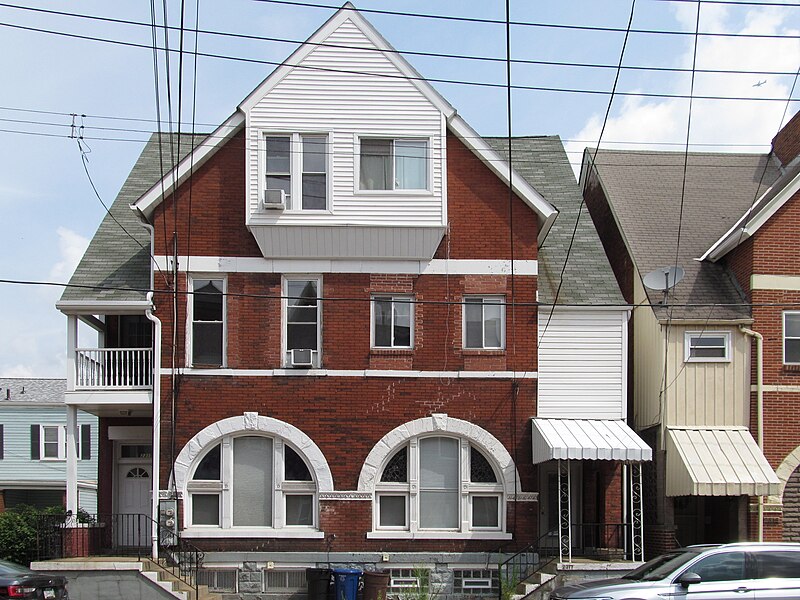Looking for something else entirely, old Pa Pitt accidentally solved a mystery that had struck him back in May, when he photographed the First Church of the Brethren in Garfield. At that time, he had thought that the attached parsonage was “in an extraordinarily rich and accurate Tudor style for such a small house.”

It turns out that the little house was by a big architect: John T. Comès, probably our most prolific architect of Catholic churches, and one—not surprisingly—known for his love of accurate historical detail. He was working for Beezer Brothers at the time, and he exhibited this drawing at the Pittsburgh Architectural Club’s 1900 exhibition:

Here is how one critic described the drawing:
Mr. John T. Comes renders an admirable Pastor’s Residence for “First Brethren Church,” by Beezer Brothers, which leans hard to an old church and breaks away from the sidewalk in a most happy manner, winding up the stone stairs to a reserved and “strong door.” The drawing itself is a happy one. The pots on the chimney are swelling beyond redemption.
The front has been replaced by a later porch, but otherwise Comès’ happy little house survives much as he drew it. And Father Pitt is delighted to add one more to the known works of a remarkable artist.





















